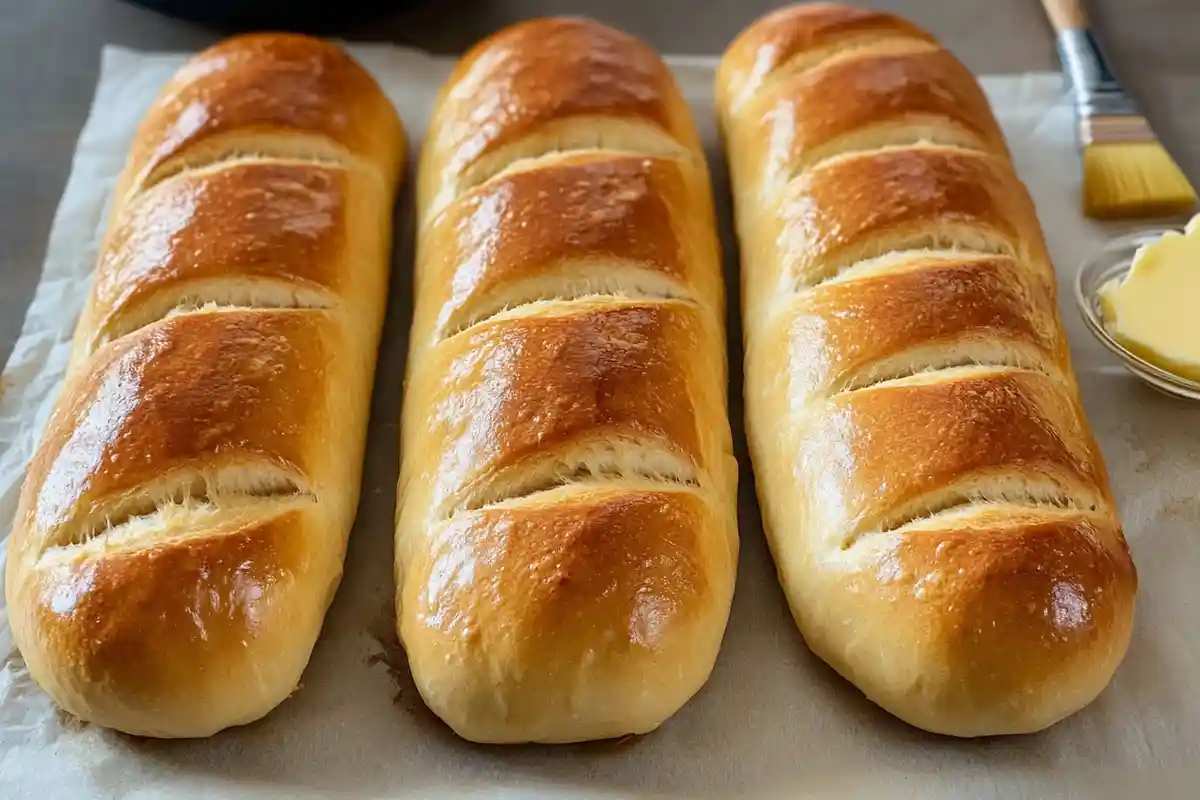Introduction to Sourdough Hoagie Rolls Recipe
Homemade bread has a charm that’s hard to resist, and when it comes to creating something extraordinary, sourdough hoagie rolls take the spotlight. Their soft yet structured interiors and a hint of tanginess make them perfect for sandwiches, subs, or even a standalone snack. This guide takes you through every step of crafting these delightful rolls, ensuring you can replicate the bakery-fresh taste in your kitchen.
The secret? A well-tended sourdough starter, a bit of patience, and a sprinkle of passion for baking. Let’s delve into the world of sourdough sandwich rolls and uncover the steps to make them a staple in your home.
Table of Contents
What Are Sourdough Hoagie Rolls?

Sourdough hoagie rolls are long, slightly flat rolls with a tender crumb and just enough crust to hold hearty fillings without crumbling. While traditional hoagie rolls often use commercial yeast for a quick rise, this version swaps it out for a sourdough starter. The result? A subtle tang and superior texture that elevate any sandwich.
Their origins trace back to Italian-American communities where hoagies became synonymous with substantial, layered sandwiches. These rolls are the unsung hero, carrying robust fillings like deli meats, cheese, and veggies while keeping flavors balanced.
Why Choose Sourdough for Hoagie Rolls?
Sourdough is more than just a trendy bread option; it’s a healthier, tastier alternative that can transform your baking game. Here’s why it’s ideal for hoagie rolls:
- Healthier Digestion: The fermentation process breaks down gluten, making it easier on the stomach and more nutrient-dense.
- Distinct Flavor: That mild tangy note complements both savory and sweet toppings beautifully.
- Textural Excellence: The natural fermentation creates a chewy yet light interior, perfect for holding sandwich fillings.
When you choose sourdough, you’re not just making bread but investing time in creating a superior culinary experience.
Understanding the Popularity of Hoagie Rolls
Hoagie rolls are beloved for their versatility. Whether making a classic sub or experimenting with unique flavors, these rolls serve as a reliable base. From delis to food trucks, they’re a favorite choice for all kinds of sandwiches. And, honestly, who doesn’t appreciate sturdy bread to hold the works without falling apart?
But there’s more to it than practicality. Hoagie rolls are a cultural staple in many regions, celebrated for their role in iconic recipes like Philly cheesesteaks or Italian hoagies. They embody comfort food at its finest, and sourdough takes that to a new level.
Looking for more inspiration? These recipes perfectly complement your sourdough hoagie rolls recipe:
- Sourdough Dinner Rolls Recipe: Bake soft and buttery rolls that are perfect for family dinners or gatherings.
- Sourdough Cinnamon Rolls: Enjoy the tangy sweetness of these gooey cinnamon rolls made with sourdough.
- Sourdough Discard Tortillas Recipe: Transform your sourdough discard into fresh, soft tortillas.
- Sourdough Sandwich Bread Recipes: Learn to bake the ideal sandwich bread with a delicious sourdough tang.
Essential Ingredients for Sourdough Hoagie Rolls
Crafting sourdough hoagie rolls begins with choosing the right ingredients. Each element is crucial in achieving the perfect texture, flavor, and rise. Let’s explore the essentials that turn a simple recipe into an exceptional bake.
Sourdough Starter
The heart and soul of your sourdough hoagie rolls recipe is an active sourdough starter. This fermented mixture of flour and water contains natural yeast and bacteria that give the rolls their signature tang.
- Why It Matters: A healthy starter ensures a good rise and enhances flavor complexity.
- Feeding Tips: Feed your starter with equal parts flour and water before baking. Allow it to bubble and double in size, signaling it’s ready to work magic.
- Pro Tip: If you’re new to sourdough, consider maintaining a simple all-purpose flour starter for consistency.
Flour Selection
Flour is the backbone of any bread recipe, and for sourdough sandwich rolls, the choice matters.
- Best Options: Bread flour is ideal for its high protein content, which contributes to better gluten development. A mix of bread flour and all-purpose flour works well too.
- Whole Grains: Adding a small percentage of whole wheat or rye flour introduces depth to the flavor. Be cautious, though—too much can make the rolls dense.
- Pro Tip: Always weigh your flour for accuracy. Cup measurements can lead to inconsistencies.
Liquids and Fats
The right combination of liquids and fats ensures your dough is supple and easy to handle.
- Water: Stick to filtered or spring water to avoid chemicals inhibiting fermentation.
- Milk or Cream: For softer, slightly enriched rolls, substitute a portion of water with milk.
- Oils and Butter: A tablespoon of olive oil or melted butter adds tenderness without making the rolls greasy.
Sweeteners and Salt
Balancing sweetness and saltiness is crucial for the flavor profile.
- Sweeteners: A teaspoon of sugar or honey enhances taste and feeds the natural yeast in the starter.
- Salt: Essential for strengthening the dough structure and enhancing flavor. Use acceptable sea salt for even distribution.
Step-by-Step Preparation Guide
With the ingredients ready, it’s time to create the dough. Follow these steps for consistent results.
Mixing the Dough
The foundation of your sourdough hoagie rolls recipe starts here.
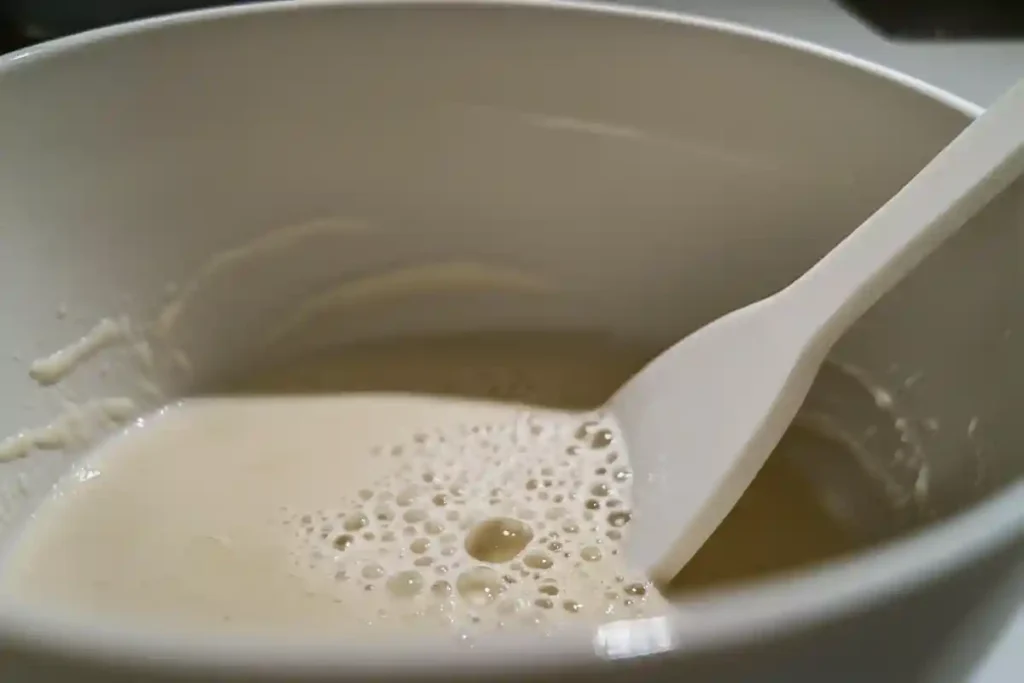
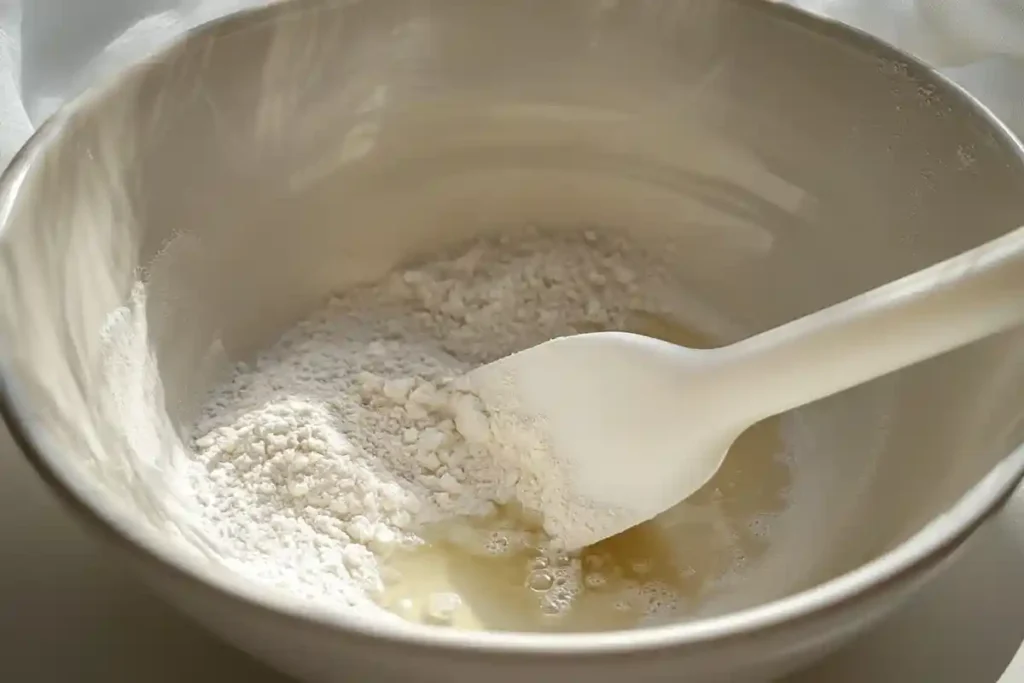
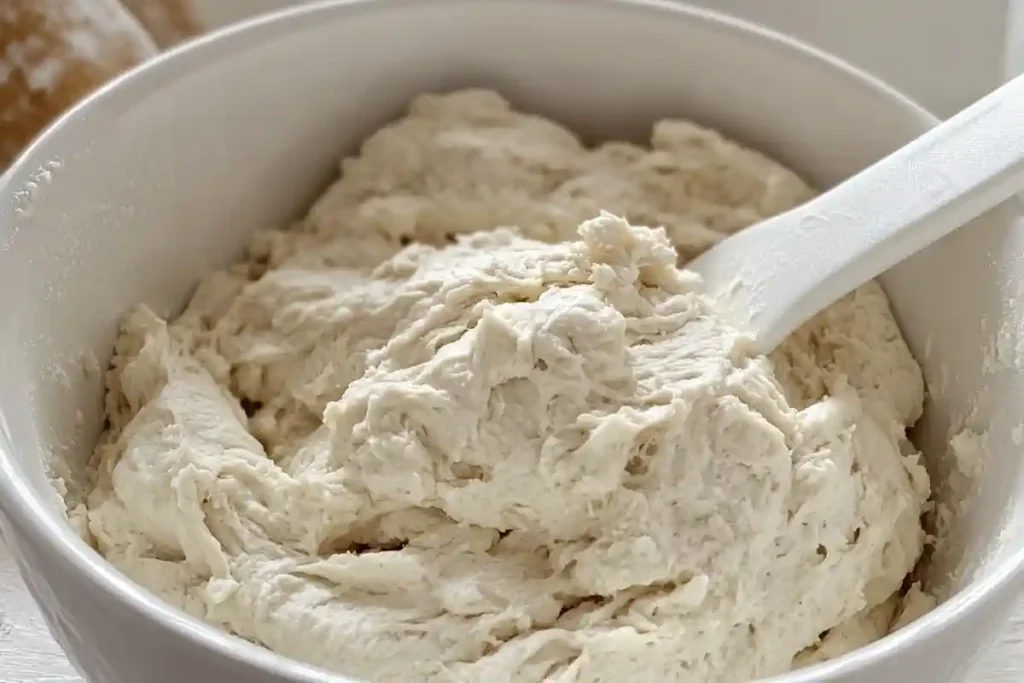
- Combining Ingredients: In a large bowl, mix your active starter, flour, water, and salt. Stir until you achieve a shaggy dough.
- Autolyse Stage: Allow the mixture to rest for 20-30 minutes. This step hydrates the flour and kickstarts gluten development.
Kneading Techniques
Kneading develops the gluten structure, giving your dough strength and elasticity.
- Hand Kneading: Stretch and fold the dough on a lightly floured surface for 8-10 minutes.
- Machine Kneading: Use a stand mixer with a dough hook for 5-7 minutes on medium speed.
- Windowpane Test: To check readiness, stretch a small piece of dough. If it forms a thin, translucent membrane, it’s good to go.
First Fermentation (Bulk Fermentation)
Patience pays off during this stage.
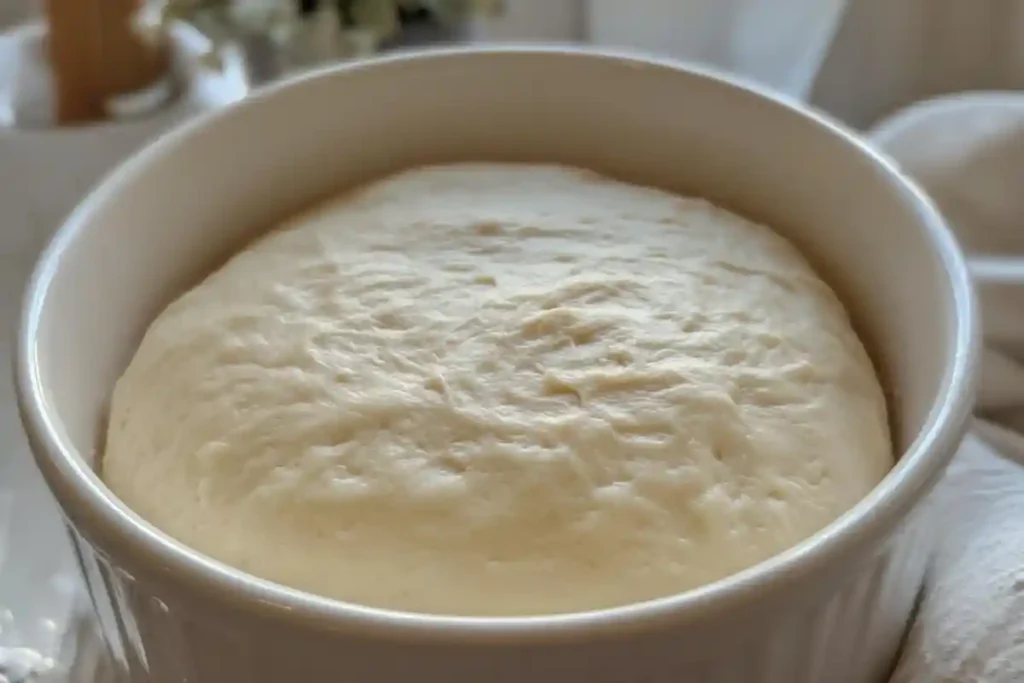
- Duration: Cover the dough and let it rest at room temperature for 4-6 hours. The dough should double in size.
- Stretch and Fold: Stretch gently and fold every 30-60 minutes to strengthen the gluten.
- Signs of Readiness: When gently shaken, the dough will feel airy and slightly jiggly.
Shaping, Proofing, and Baking
Now that your dough is beautifully fermented, it’s time to shape it into perfect sourdough hoagie rolls. This stage requires precision and care to ensure even baking, a light crumb, and a sturdy crust. Let’s break it down step by step.
Shaping the Hoagie Rolls
Shaping is where your rolls begin to take their final form. Proper technique ensures uniformity and helps the rolls rise evenly in the oven.
Dividing the Dough
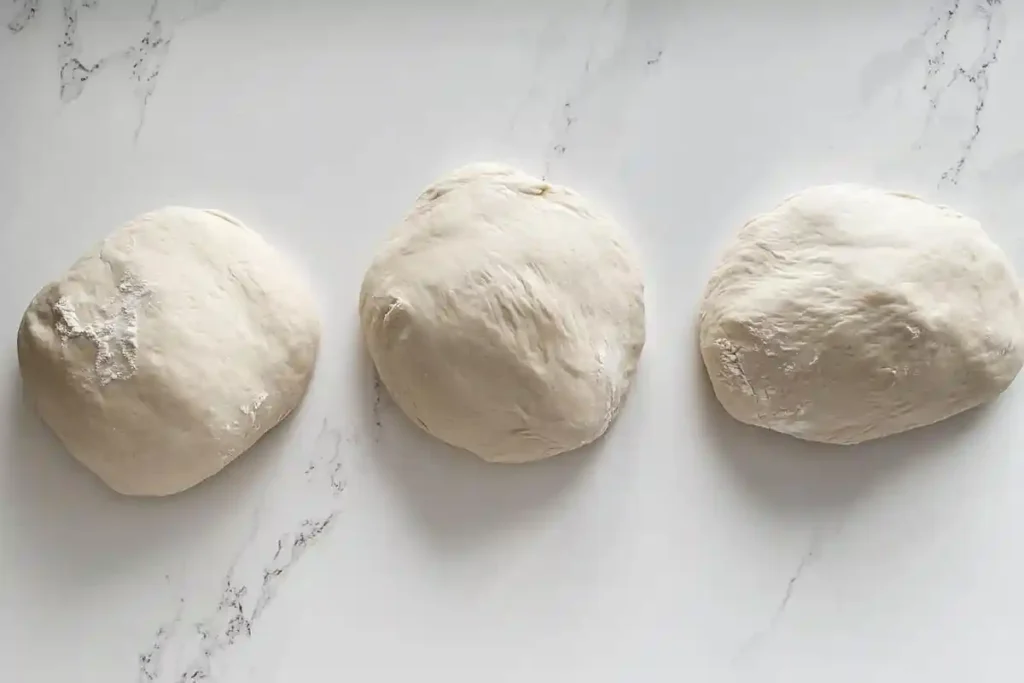
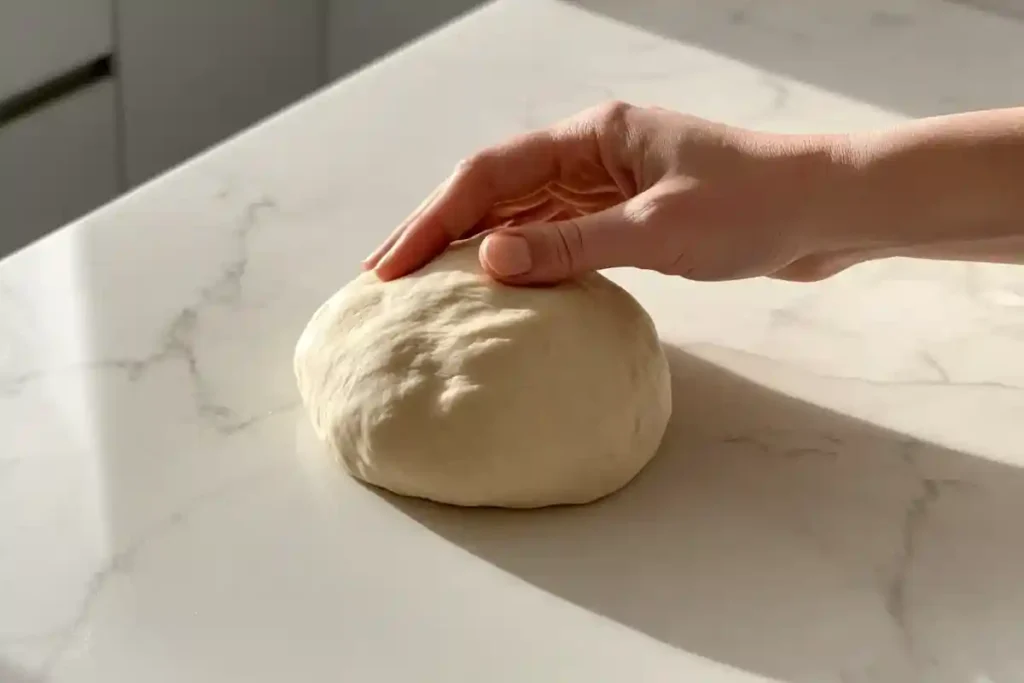
Start by dividing the dough into equal portions to create consistent rolls.
- Portion Sizes: Use a kitchen scale to measure each piece, ideally 100–120 grams, depending on your desired roll size.
- Gentle Handling: Avoid overworking the dough to retain its airy structure.
Forming the Roll Shape
Creating the classic hoagie roll shape is more straightforward than it seems.
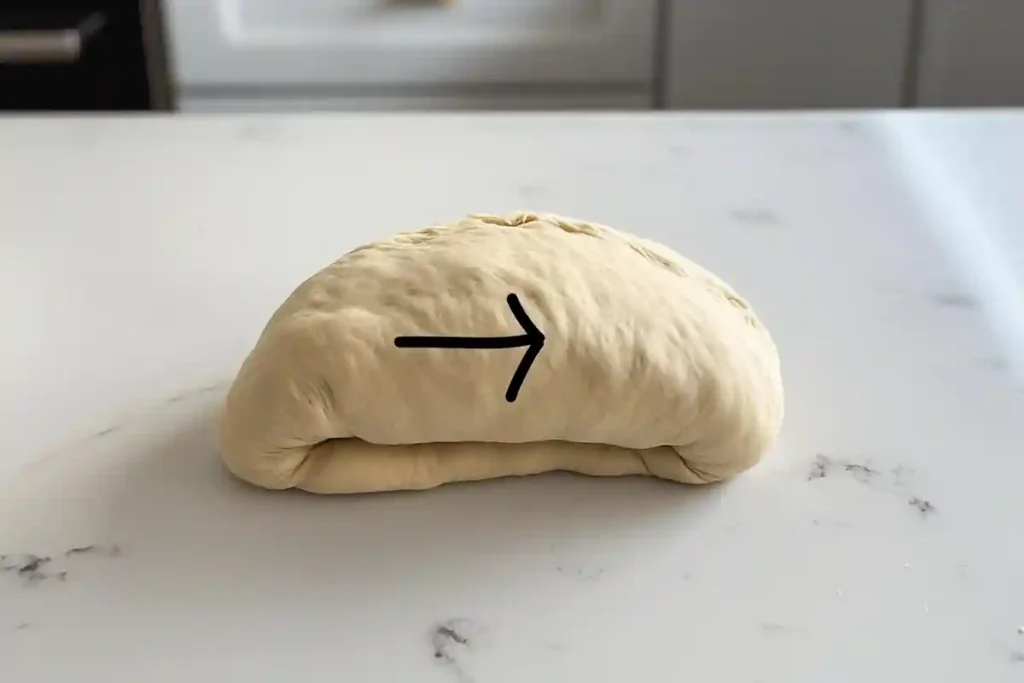
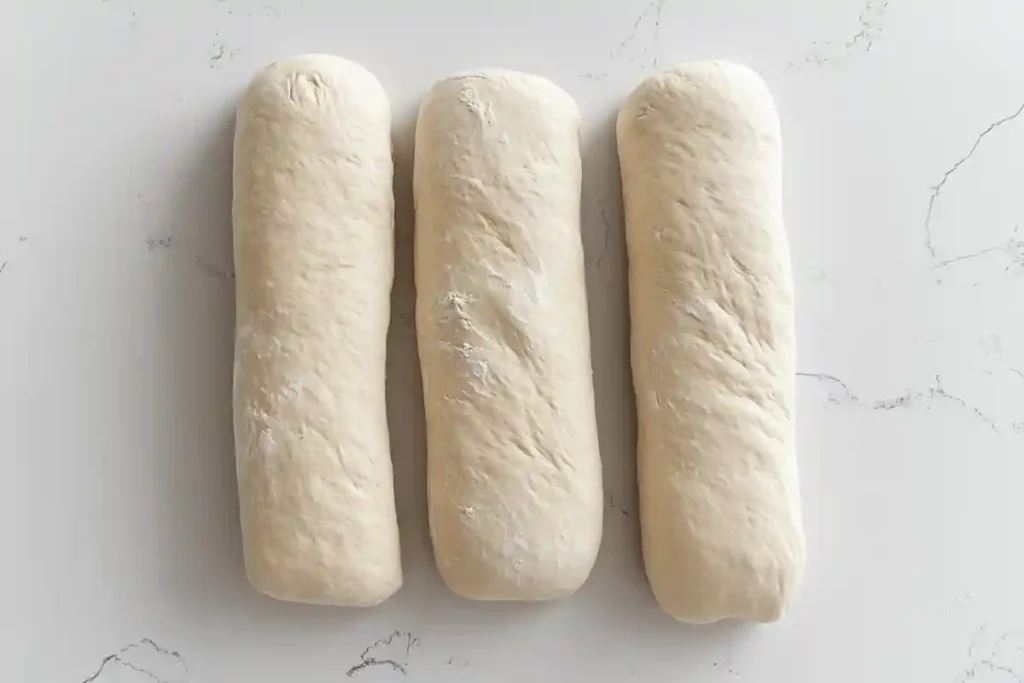
- Technique: Flatten each portion into a rectangle, then tightly roll it lengthwise, pinching the seam to seal.
- Surface Tension: Gently roll the formed dough on a clean surface to create tension, ensuring a smooth top.
- Uniformity: Place shaped rolls on a parchment-lined baking sheet, spaced apart to allow room for expansion.
Final Proofing
Proofing, the final rise before baking, is crucial for achieving the ideal texture.
Optimal Proofing Environment
Providing the right conditions during proofing can make or break your rolls.
- Temperature: Proof the rolls in a warm, draft-free space, ideally around 75–80°F (24–27°C).
- Humidity: Cover the rolls with a damp cloth or plastic wrap to prevent the surface from drying out.
Duration and Readiness Indicators
Keep an eye on your dough as it proofs.
- Timing: This step usually takes 1–2 hours, depending on the room temperature.
- Signs of Readiness: Gently press a roll with your finger. If the indentation springs back slowly, it’s ready to bake.
Common Proofing Challenges
Sometimes, proofing doesn’t go as planned. Here’s how to troubleshoot:
- Over-proofing: Rolls may collapse during baking if proofed too long. Look for a puffy but not overly expanded dough.
- Under-proofing: Rolls that don’t rise enough before baking may have a dense texture.
Baking the Rolls
The moment of truth—baking the sourdough hoagie rolls to golden perfection.
Oven Preparation
A well-prepared oven is essential for evenly baked rolls with a beautiful crust.
- Preheating: Preheat your oven to 425°F (220°C) at least 30 minutes before baking.
- Steam Creation: Place a pan of water on the bottom rack to create steam, which helps develop a crisp crust.
Baking Process
Follow these steps to bake your rolls to perfection:
- Positioning: Place the tray of rolls on the center rack for even heat distribution.
- Time and Temperature: Bake for 18–22 minutes, rotating the tray halfway through for consistent browning.
- Visual Cues: Rolls are done when the crust turns golden brown and sounds hollow when tapped on the bottom.
Cooling and Storing
After baking, allow your rolls to cool correctly to maintain their texture and flavor.
- Cooling: Transfer rolls to a wire rack and let them cool completely before slicing. It prevents the crumb from becoming gummy.
- Storage: Store in an airtight container at room temperature for up to 3 days, or freeze for longer preservation.
Serving Suggestions and Variations
Now that your freshly baked sourdough hoagie rolls are ready, it’s time to let their versatility shine. Whether you’re crafting a classic sub or experimenting with new flavors, these rolls elevate any meal. Let’s explore some delicious serving ideas and creative ways to make them uniquely yours.
Delicious Sandwich Ideas
Hoagie rolls are a blank canvas for building hearty, satisfying sandwiches. Here are some popular options to inspire your next creation.
Classic Italian Sub
The quintessential sandwich for a sourdough hoagie roll is an Italian sub.
- Fillings: Layer thinly sliced salami, ham, capicola, and provolone cheese. Add shredded lettuce, thinly sliced tomatoes, onions, and banana peppers.
- Condiments: Drizzle with olive oil, red wine vinegar, and a sprinkle of oregano for that authentic deli flavor.
- Pro Tip: Lightly toast the roll for a warm, crispy exterior that contrasts beautifully with the fresh fillings.
Vegetarian Delight
For a lighter, plant-based option, try a veggie-loaded sandwich.
- Fillings: Combine roasted red peppers, grilled zucchini, avocado slices, and crumbled feta or goat cheese.
- Spread: Use hummus, pesto, or tzatziki to add creamy flavor.
- Extras: Add a handful of arugula or spinach for crunch.
Creative Variations of Sourdough Hoagie Rolls
Sometimes, it’s fun to stray from tradition. Customizing your rolls with toppings or alternative ingredients allows you to tailor them to your taste.
Adding Seeds and Toppings
Sprinkling seeds or spices on your rolls before baking can add flavor and visual appeal.
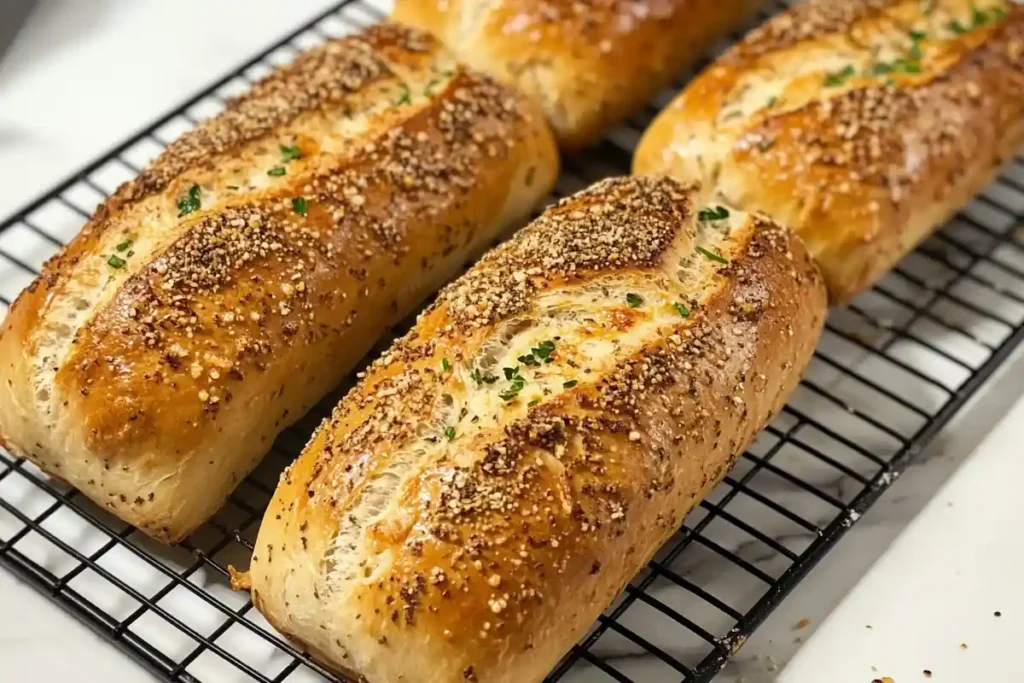
- Popular Toppings: Sesame, poppy, or an everything bagel mix.
- How-To: Lightly brush the rolls with egg wash or water, then sprinkle the desired topping evenly over the surface.
Incorporating Whole Grains
Adding whole grains boosts nutrition and brings a nutty flavor to your rolls.
- Flour Variations: Substitute up to 25% of the bread flour with whole wheat or rye flour.
- Adjustments: Since whole grains absorb more liquid, you may need to increase the water content slightly.
Making Mini Hoagie Rolls
If you prefer smaller portions or need appetizer rolls, mini hoagie rolls are a great alternative.
- Shaping: Divide the dough into smaller portions, around 50–60 grams each.
- Baking Time: Reduce the baking time by 3–5 minutes to account for the smaller size.
Tips for Sandwich Perfection
Whether classic or creative, these tips can elevate your sandwich game:
- Layer Smart: Place wetter ingredients like tomatoes, such as lettuce, between dryer ones, to prevent sogginess.
- Press Lightly: Press sandwiches gently after assembling to help flavors meld without crushing the bread.
- Toast with Care: If toasting, wrap the sandwich in foil to warm it evenly without drying out the roll.
FAQ’s About Sourdough Hoagie Rolls Recipe
Bread-making can spark curiosity, especially when working with sourdough. Here are answers to common questions about sourdough hoagie roll recipe, their versatility, and the art of sourdough baking.
What Type of Bread Is a Hoagie Roll?
A hoagie roll is a type of long, flat bread with a soft yet structured interior and a slightly chewy crust. It’s designed to hold substantial fillings without falling apart, making it ideal for sandwiches like subs and cheesesteaks.
In the case of sourdough hoagie rolls recipe, the sourdough starter adds a tangy depth of flavor and a more complex texture compared to traditional hoagie rolls made with commercial yeast.
Is Sourdough Bread Good for Sandwiches?
Absolutely! Sourdough bread is an excellent choice for sandwiches, including hoagies. Its chewy crumb and slightly tangy flavor pair well with various fillings, from savory deli meats to fresh vegetables.
The natural fermentation process in sourdough also makes it more digestible, giving your sandwiches great taste and added nutritional benefits.
What Is the Secret to Good Sourdough Bread?
Good sourdough bread, including hoagie rolls, hinges on a few key factors:
- Active Starter: A well-fed and bubbly starter ensures proper rise and flavor development.
- Fermentation Time: Don’t rush the process. Longer fermentation enhances texture and taste.
- Baking Technique: Proper oven temperature and steam during baking create the perfect crust and crumb.
Attention to these details ensures your sourdough bread is consistently delicious.
Can I Bake Sourdough Discard by Itself?
While sourdough discard can’t be baked like a starter-fed dough, it’s a valuable ingredient in other recipes.
- Best Uses: Incorporate it into pancakes, waffles, crackers, or flatbreads to minimize waste.
- Why Not Solo? Discard lacks the leavening power needed to make bread rise, so it’s best as an addition to recipes that don’t rely on yeast.
How Long Do Sourdough Hoagie Rolls Stay Fresh?
When stored properly, sourdough hoagie rolls can remain fresh for up to 3 days at room temperature.
- Storage Tips: Keep them in an airtight container or a bread bag. For more extended storage, freeze them in a sealed bag for up to 3 months.
- Reviving Rolls: Reheat frozen rolls in the oven at 350°F (175°C) for 10–12 minutes to return their freshly baked texture.
What Can I Do with Leftover Sourdough Hoagie Rolls?
Leftover rolls are incredibly versatile and can be repurposed in creative ways:
- Garlic Bread: Slice the rolls, spread with garlic butter, and toast them for a flavorful side dish.
- Croutons: Cut into cubes, season, and bake until crispy for soups and salads.
- Bread Pudding: Use cubed rolls as a base for a sweet or savory bread pudding recipe.

